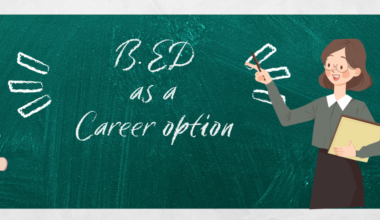What comes to your mind when you think of learning? Have you ever thought of ways other than essential learning modes? It’s time to think. Let’ study hybrid and blended learning models in detail to understand the difference and how these models are gaining traction among higher education institutions.
At present, technological interference in the world of education has brought a revolution. Educationists are trying to figure out new ways that befit students’ unique learning needs and styles without compromising with their potential. To adopt the learning models, schools and colleges are integrating distance learning and educational technology into their curricula.
Higher education is concerned about student technology access value propositions, tenuous enrollment process, examination and more. New learning models are being identified to support teaching-learning sessions and ensure more student participation.
What is Hybrid Learning?
When traditional F2F teaching-learning combines with distance or offline mode of learning, hybrid learning takes place. Remote courses or experiential learning are a few examples. The learning process aims at combining effective learning strategies that can help make teaching-learning better. Changes are to be made without altering the conventional mode of learning and hence tweaking the process to make it student-friendly. As a new mixed-modality approach, it is meant to complement the conventional training methods.
Some of the prominent teaching-learning methods in hybrid learning are:
- Pre-recorded video training
- Online discussion boards
- Online tasks
- Learning management systems
- Video conferencing
Looking for an example? Here it is. You can create a hybrid learning model by scheduling a two-day-per-week class as an in-class lecture and hands-on lab or online assignment on alternate days.
What is Blended Learning?
It’s a blend of offline and online learning where students can interact with each other in a traditional setting while getting online access to material available virtually. Catering students’ different learning styles, blended learning promotes students to engage in online learning, connect with other students, remote learning, question answers, online assignment with their teachers, along with experiential activities that classrooms support. By using the Blended learning approach, the teacher uses different teaching styles she accommodates while providing relevant guidance in real-time. Theorists and reflectors talk about interactive and pragmatic elements of blended learning that can contribute to the holistic development of students. Offering greater potential for flexibility, this method of teaching complies with the understanding of the students. Even if students need to leave the class for some reason, they can join online at their convenience to miss essential things. Students with physical or economic barriers can get improved accessibility.
What’s the Difference between the Two?
Both blended and hybrid learning models are a combination of in-person and online learning meant to suit the needs of aspiring higher education students. And the difference between the two is-where hybrid learning uses any available learning methodology to improve teaching structure and emphasizes online/nontraditional instruction; blended learning combines distance learning with standard teaching and emphasizes an equal mix of distance learning and conventional instruction.
Hybrid learning v/s Blended Learning
In blended learning, efforts are made to incorporate distance and classroom strategies in one package to meet the growing needs of students. Here, F2F learning is the key component rather than a replacement. The learning material is delivered as a whole to a single group, and the information is dispersed to other students through a variety of online resources.
In hybrid learning, the same content is delivered to groups of online and offline students and every possible learning technique is used to make it comprehensible for students to meet their individual needs.
Benefits of Hybrid and Blended Learning
Hybrid and blended learning comes with a handful of benefits not only for students but also for teachers and brings learning opportunities for them. Learning to use new hybrid tools creatively adds to their professional exposure. This makes the modalities fascinate students and teachers alike.
- Convenience + Regularity
Blended learning allows students to learn at their own pace by using digital material and conducive classroom learning conditions. The opportunity to personalize the mode of instruction is encouraged through these models. - Enough Exposure and Professional Interaction
Repeated interaction with industry professionals and professors enables students to think beyond their abilities and get enough exposure. Interacting with professors and peers will improve conceptual understanding and will clear doubts eventually. - Learn What You Want
While studying online, students don’t need to attend the whole lecture for the sake of attending. They can skip the part they already know to focus on other important parts. It allows introverted students to speak overtly in front of teachers and students to improve their communication skills.
While learning online they can chart their progress rate and integrate novel ways to learn.
Strategic planning around these two approaches may work in a remote scenario. These modalities aid teachers to counter the challenges that conventional learning models may bring. And this makes these models worth implementing.










